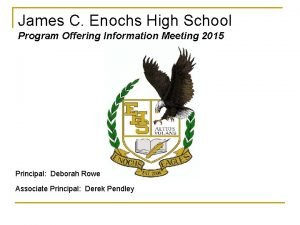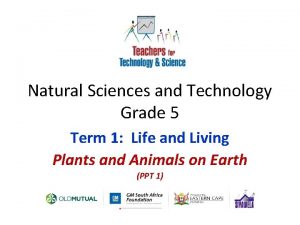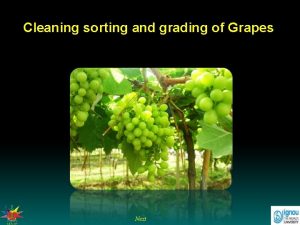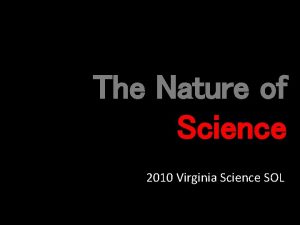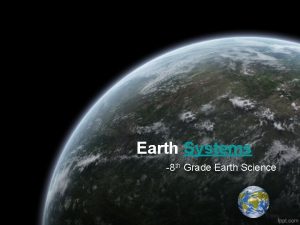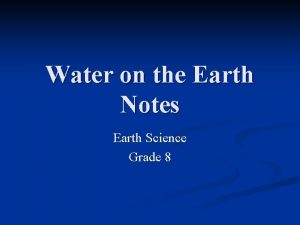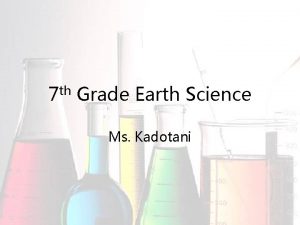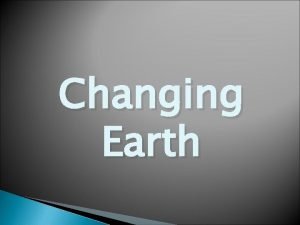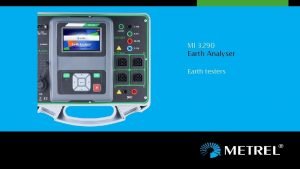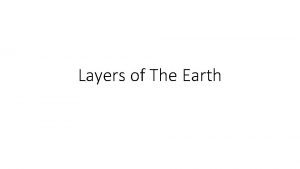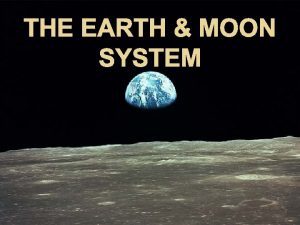WHAT IS SCIENCE 6 th Grade Earth Science












- Slides: 12

WHAT IS SCIENCE? 6 th Grade Earth Science

WHAT IS SCIENCE? A. Science—an organized way of studying things and finding answers to questions. B. Critical thinking—a process that uses certain skills to solve problems.

G LIKE A SCIENTIST… THINKIN • Observe! Use your senses to gather information. • Infer! Try to explain the things that you have observed in a reasonable way. • Predict! Make a guess of what will happen that is based on experiences and/or evidence.

THE SCIENTIFIC METHOD The scientific method is a process used to find answers to questions about the world around us. ØThere is not just one scientific method. ØDifferent scientists use different methods of conducting experiments. ØSome have more steps than others, but they all begin by identifying a problem or question. ØThey all provide an organized method for conducting and analyzing an experiment.

1. STEPS OF THE SCIENTIFIC METHOD… Problem or Purpose This is where you state the questions or problems that have come from observations and inferences that you make or maybe just from your curiosity. The problem or purpose is the reason you are performing the experiment. An example is when Benjamin Franklin asked, “What is lightning? ”

STEPS OF THE SCIENTIFIC METHOD… 2. Research ØThink about what you know. ØRead and study about the topic. ØConsult experts for help. ØGain knowledge so that you have a good idea about what may happen.

STEPS OF THE SCIENTIFIC METHOD… 3. Hypothesis Benjamin Franklin knew Form an educated GUESS, by using your research, that you think will answer your problem or purpose that was stated in step 1. The hypothesis must be testable so that you can carry out an experiment to support or disprove it. that both lightning and electrical sparks produced light, followed crooked paths, and made crackling noises. His hypothesis was that lightning was electricity.

STEPS TO THE SCIENTIFIC METHOD… 4. Experiment Ø Create the hands-on portion of the scientific method. These are the steps you take to figure out if your hypothesis is correct.

VARIABLES? In a ‘controlled experiment’ the scientist creates the conditions to test the hypothesis. Variables are factors that change in the experiment. There are two types of variables… Independent Variable (Manipulated Variable) Dependent Variable (Responding Variable)

STEPS TO THE SCIENTIFIC METHOD… 5. Analyze the Data are the facts, figures, and other evidence gathered throughout the observations. Data is represented or shown in tables and graphs.

STEPS TO THE SCIENTIFIC METHOD… 6. Conclusion ØThis is a paragraph that is written to communicate what you have learned from an experiment. ØIt tells whether your hypothesis was supported (correct) or refuted (incorrect). ØEither way, it is a valuable experiment! You learn something!

SCIENTIFIC THEORIES AND LAWS Scientific theory—an explanation of things or events based on scientific knowledge; the result of many observations and experiments. Scientific law—a statement about how things work in nature
 Earth science grade 9
Earth science grade 9 4th grade science jeopardy
4th grade science jeopardy My favorite subject is...
My favorite subject is... Plants and animals on earth grade 5
Plants and animals on earth grade 5 Ns grade 7 term 4
Ns grade 7 term 4 College grading system
College grading system Teddy bear jump rope rhyme
Teddy bear jump rope rhyme Difference between grade a and grade aa eggs
Difference between grade a and grade aa eggs Milk grades
Milk grades Grading of grapes
Grading of grapes Low grade and high grade metamorphic rocks
Low grade and high grade metamorphic rocks Where do polar and tropical air masses develop
Where do polar and tropical air masses develop Earth science sol 2010
Earth science sol 2010
